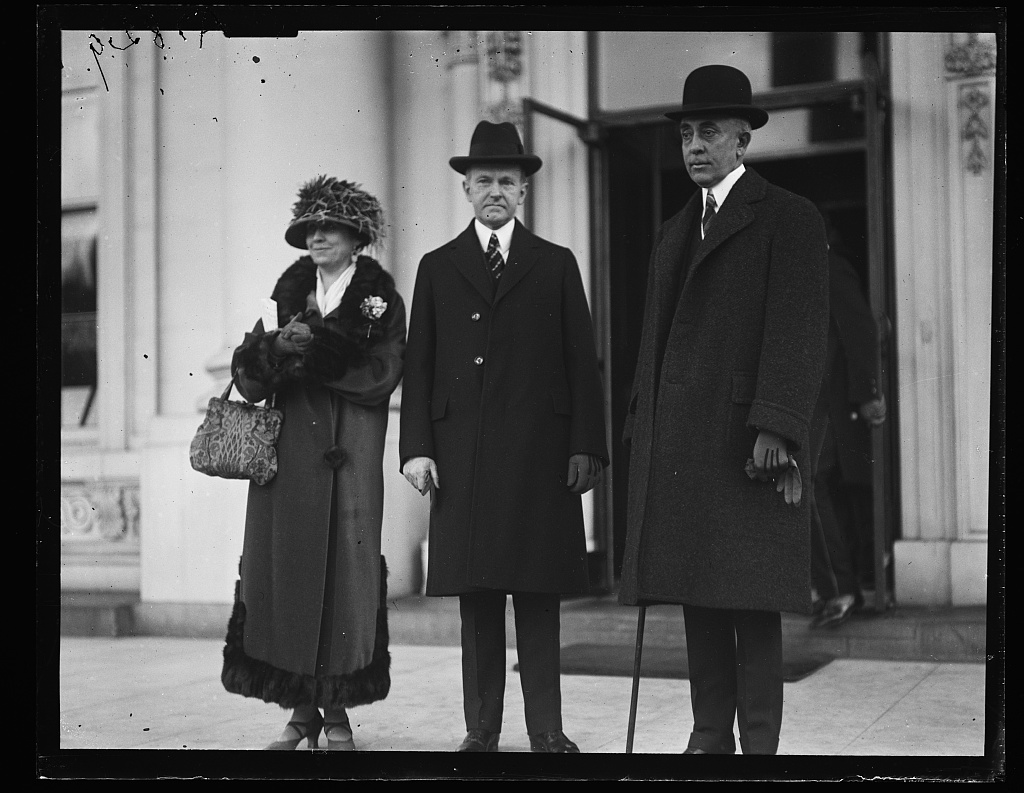President Coolidge: “Mr. Strother, who had something to do about arranging and compiling in conjunction with Mr. Slemp that book that Mr. Slemp issued, was in this morning and brought me in a presentation copy of it. Glancing at it I see that it is very well indexed and there is topically arranged in the book things that I have said in relation to a great many subjects. I think your offices ought to provide each one of you with a copy of that book.”
Press: “Would you autograph each copy?”
President Coolidge: “Yes, I would be glad to, and whenever you want to know what my position is on any subject, if you will just glance at that index it will very quickly refer you to a place in the book where you can learn what I have said in relation to a very great many different subjects” — Press Conference on March 12, 1926.
Another conference on May 31, 1927, revealed this witty exchange,
President Coolidge: “Here are two or three questions that perhaps could be answered more desirably by reference to Mr. Slemp’s book–what is the title of that?”
Press: “The Mind of the President.”
Coolidge: “The Class is perfect.”
What elected official today would gladly refer you to something they already said that had been set in printed form going back as many as four years?
“An extremely interesting study is the relation of President Coolidge to the Presidency itself. He has reversed a recent tradition of the Presidential office. For a quarter of a century our Presidents have professed democracy and have practised benevolent autocracy. They believed that they could advance the welfare of the nation better than the people could advance it. They announced what they declared to be progressive policies and tried to convert the people to these policies. They tried to improve government from the top.
“Calvin Coolidge believes that progress comes direct from the people. He believes that the people, out of their local problems, out of their individual consciousness of national problems, sense the great issues of the day and reach the right conclusion regarding them. As President Coolidge sees it, the task of a great national leader is not to try to go ahead of this majestic army of human thought and aspiration, blazing new and strange paths. His function is rather to become the sensitized personal embodiment of their thoughts and aspirations, and the instrument through which they reach public expression. In this respect his chief forerunners in the Presidential office are none other than Andrew Jackson, the founder of the Democratic Party, and Abraham Lincoln, founder of the Republican Party and its first President, both exponents of the theory that the people are the seat of political wisdom as well as political power. President Coolidge’s view of these matters is an absolute reversal of the theory of the President’s function as practised in recent years. It is a restoration of the old conception of democracy. I must leave to philosophical students of history the question as to whether it is the better conception…
“It is worthy of note here that President Coolidge has appointed more committees of private citizens to investigate and report upon current problems for his guidance than any other President. He thus utilizes the resources of political wisdom embodied in the citizenry.
“In following this habit of direct reliance upon the mass of the people the radio has fitted into the situation perfectly. It seemed to have been invented for him. It came just as he did. His voice is perfectly adapted to its use in an enunciation clear and distinct. The invisible audience without the dramatic appearance of the speaker must listen, if at all, to the thought of the speaker. In this role the President shines. It has thus placed him in direct communication with the people. It is estimated that thirty million listeners heard his speech the night before the last national election and as many more during the campaign. Repeatedly he has utilized this instrumentality to give the people his views simultaneously in all parts of the country. It may, in part, account for the unanimity of sentiment now prevailing on public issues” — C. Bascom Slemp, An Analysis and an Interpretation to The Mind of the President, 1926, pp.4-6, 8-11.
